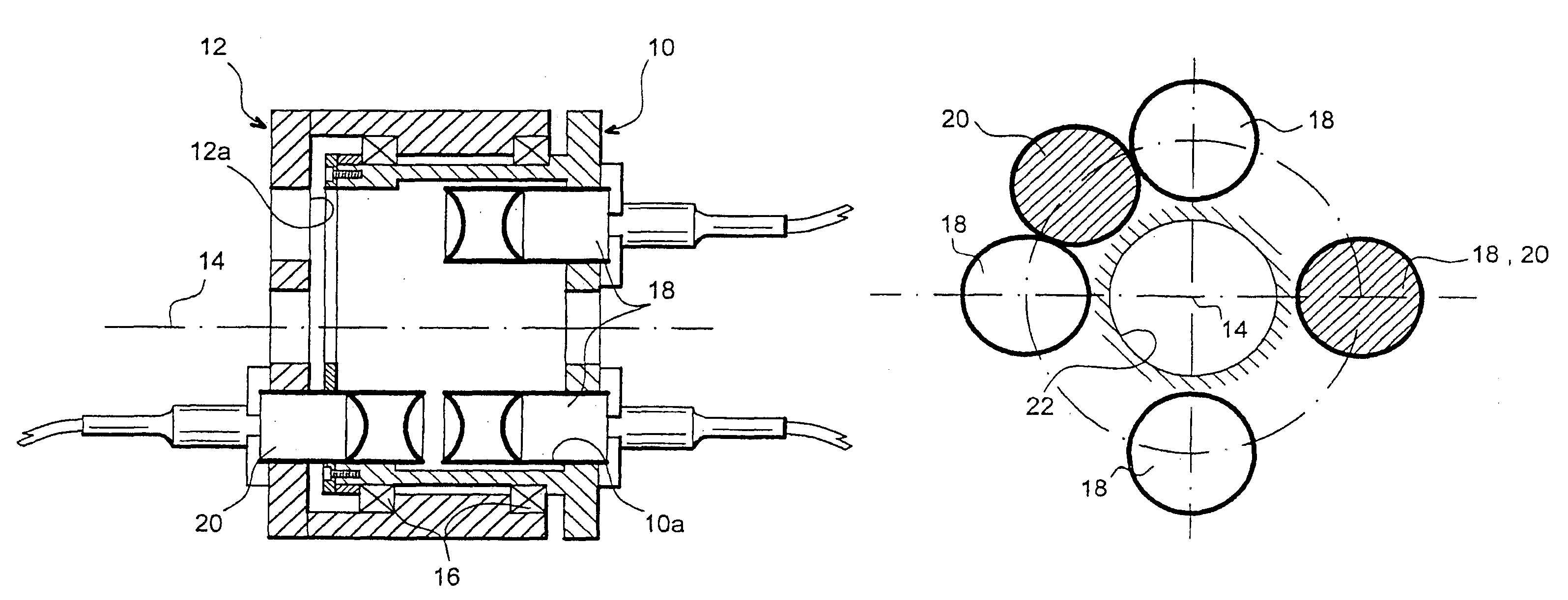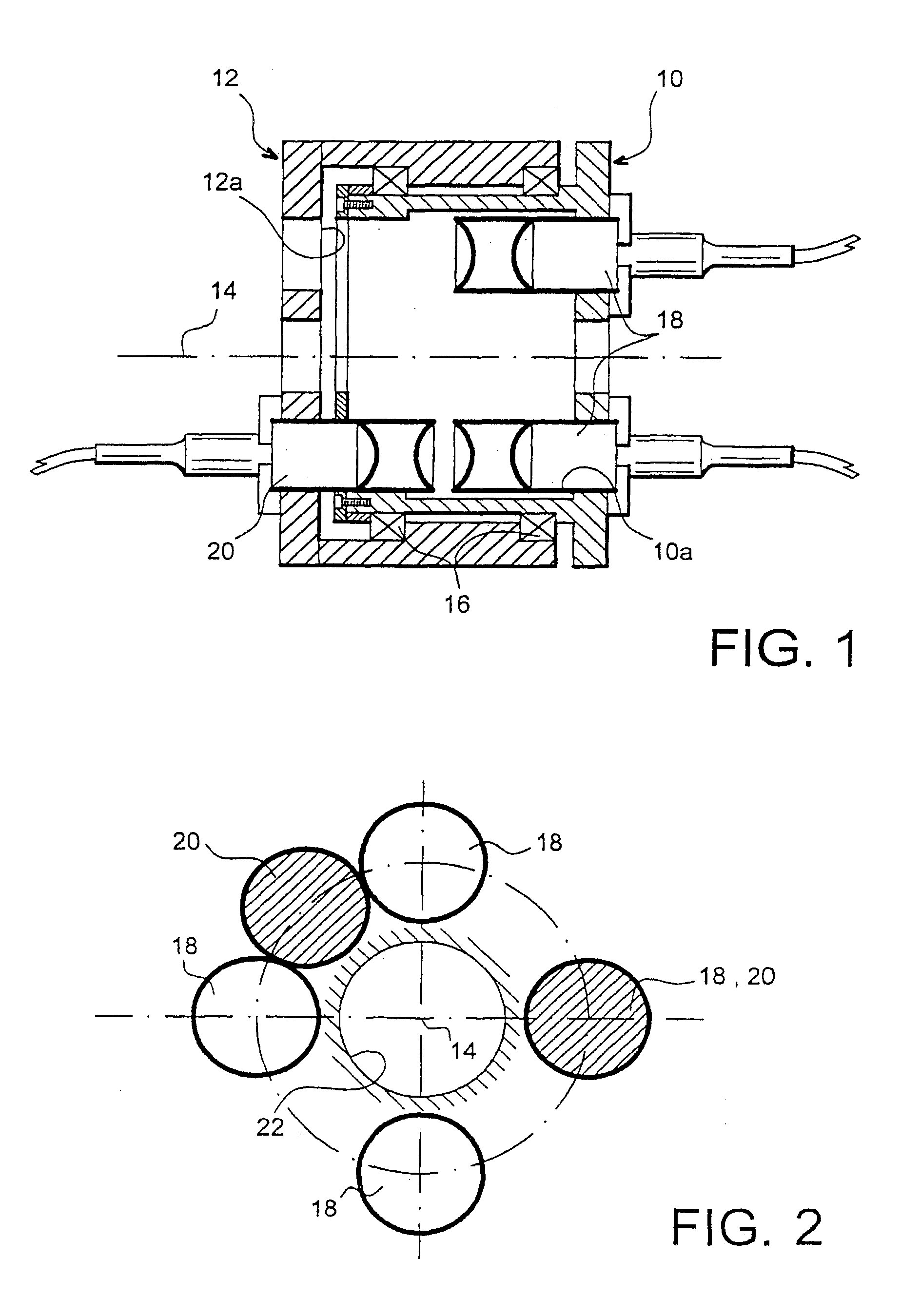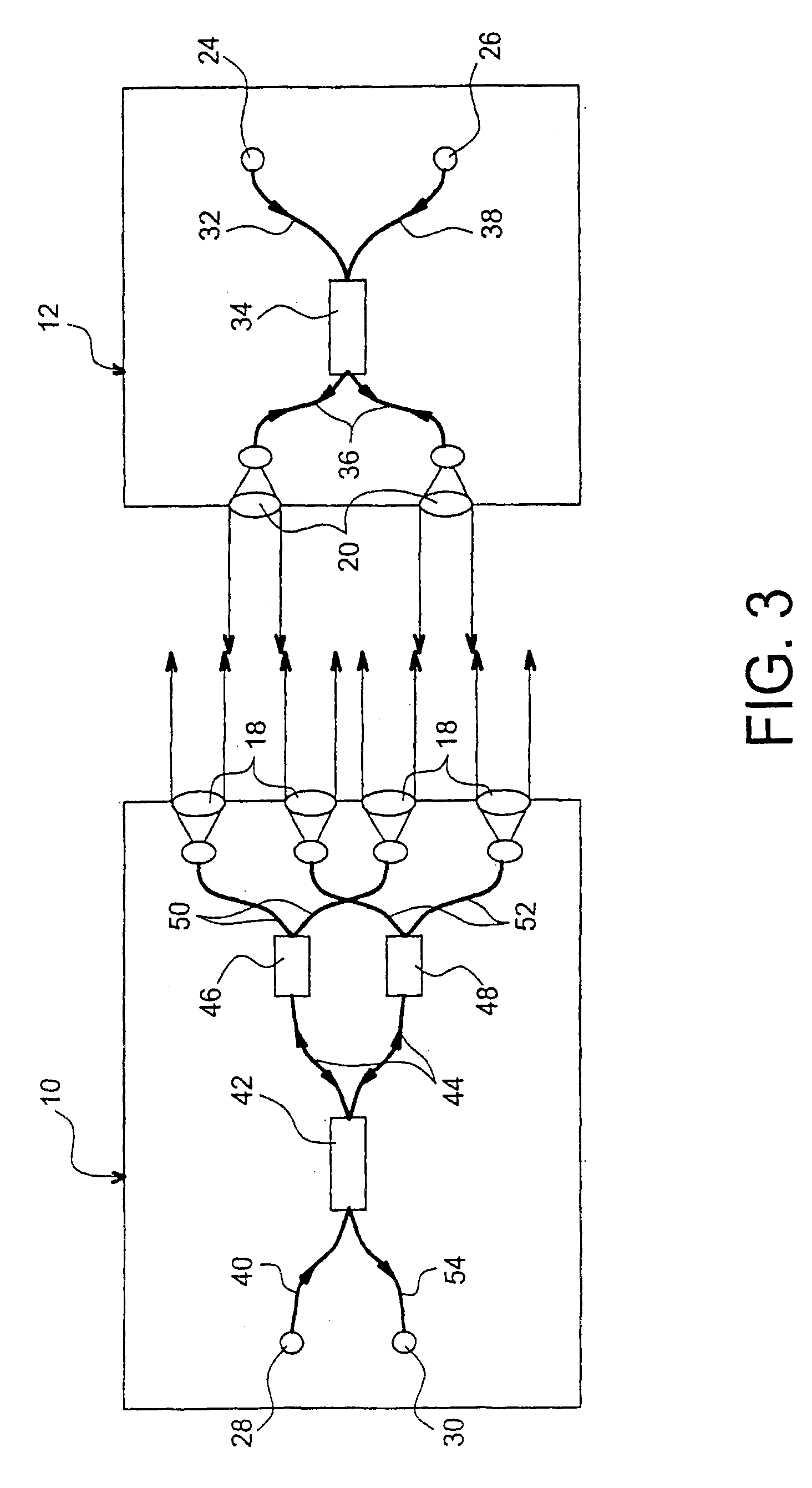Rotating optical joint
a technology of rotating optical joints and optical joints, applied in the field of rotating optical joints, can solve the problems of only a single transmission channel, limited bandwidth of such joints, wear and tear of parts,
- Summary
- Abstract
- Description
- Claims
- Application Information
AI Technical Summary
Benefits of technology
Problems solved by technology
Method used
Image
Examples
Embodiment Construction
[0041]In FIG. 1 we have represented the main part of a rotating optical joint of the “off-axis” type in the invention. As this diagram illustrates, the joint comprises a first organ 10 and a second organ 12, with a common axis 14. Organs 10 and 12 are able to rotate independently of one another on this common axis 14. To this end, bearings 16 can notably be interposed between these organs 10 and 12.
[0042]As is illustrated equally by FIG. 1, the first organ 10 comprises an end face 10a located opposite an end face 12a of the second organ 12. These end faces 10a and 12a are perpendicular to axis 14 which is common to both organs.
[0043]In the preferred embodiment of the invention illustrated as an example in FIGS. 1 and 2, the first organ 10 supports four first collimators 18, and the second organ 12 supports two second collimators 20. More specifically, the first collimators 18 extend outwards from the end face 10a of the first organ 10 and the second collimators 20 extend outwards fr...
PUM
 Login to View More
Login to View More Abstract
Description
Claims
Application Information
 Login to View More
Login to View More - R&D
- Intellectual Property
- Life Sciences
- Materials
- Tech Scout
- Unparalleled Data Quality
- Higher Quality Content
- 60% Fewer Hallucinations
Browse by: Latest US Patents, China's latest patents, Technical Efficacy Thesaurus, Application Domain, Technology Topic, Popular Technical Reports.
© 2025 PatSnap. All rights reserved.Legal|Privacy policy|Modern Slavery Act Transparency Statement|Sitemap|About US| Contact US: help@patsnap.com



